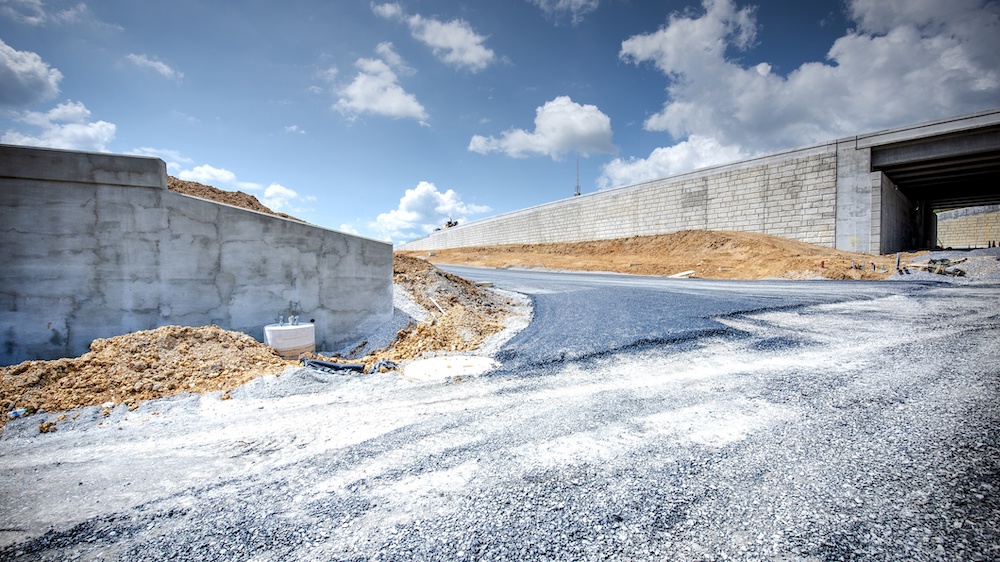If you’re interested in sharing your opinion on any cultural, political or personal topic, create an account here and check out our how-to post to learn more.
Opinions are the writer’s own and not those of Blavity's.
____
Highways across our states have historically divided Black and brown neighborhoods, and the Erie Bayfront Parkway expansion project continues a legacy of institutional racism and isolation of the neighboring Black communities. For true equality, we must address racism in all forms, including racist infrastructure that has been especially harmful to Black and brown communities across our nation.
For instance, many of our nation’s highways were built through communities of color. And currently, we’re seeing communities rising against further displacement, like in a recent lawsuit out of Houston, Texas that addresses such systemic racism. The lingering impact has moved Department of Transportation Secretary Pete Buttigieg to promise to dismantle urban freeways that were built to dissipate Black communities. Despite that pledge, the federal government is still supporting new projects that will devastate Black and working-class communities, like one underway in Erie, Pennsylvania.
For generations of Erie bayfront residents, watching money and power rally behind expensive “community revitalization” plans that would harm the mostly low-income people of color who live there is nothing new. Erie, which has ranked among the nation’s worst places to live for African Americans, is poised for another blow to livability, as the state government apparently is willing to spare no expense — nor unlawful maneuver — to force an expansion of the Bayfront Parkway, which will cause great harm to its residents of color.
The parkway runs adjacent to a historic neighborhood once called New Jerusalem, which was settled two centuries ago by free Black people who had escaped enslavement. Additionally, part of the bayfront’s story includes a historic community swimming pool called Chestnut Street Pool, which was a local gem that provided recreation at no cost to Erie residents. Unfortunately, the pool was shut down and converted into a parking lot with promises of a replacement community pool that never materialized. Our communities were again at a loss.
Since the parkway’s construction began in the 1980s, primarily running along the shore of Lake Erie's Presque Isle Bay, our communities have borne the majority of environmental burdens while not receiving the benefits the parkway promises.
Pennsylvania’s Department of Transportation (PennDOT) has ignored residents’ concerns about a waterfront parkway project that threatens to cut off community residents from the waterfront and has not been assessed for potential environmental impact. Instead, PennDOT is racing ahead with its plans, which recently received $21 million in federal funding, using a shortcut environmental review process unlawfully granted by the Federal Highway Administration.
The shortcut and exemption from the environmental review process is supposed to be used for noncontroversial projects, such as repairs to an existing road. It shouldn’t be used to build a hotly contested new expansion project that will impact both the environment and the people living in the bayfront community. The exemption also allowed PennDOT to skip proper public hearings with meeting transcripts that would have officially placed public concerns — and the agencies’ response — on the record. Our community was not presented with alternative design plans; the current design plan was pre-selected by PennDOT without proper public input.
Members of the local community will have less access — not more — to the bayfront. While the $100 million plan touts big improvement for the community, in practice it will do the opposite — widening and expanding the Bayfront Parkway, which already is a barrier dividing downtown neighborhoods from the waterfront, will worsen water and air quality for portions of the New Jerusalem and East Bayfront neighborhoods. With the project’s clear vehicles-first priorities of attracting conventions and out-of-town visitors, it’s clear that local residents are not a priority.
According to the nation’s bedrock environmental law, National Environmental Policy Act (NEPA), agencies must take a hard look at the impacts a proposed project would have on people and the environment. We demand PennDOT live up to its commitment from 2018 to complete an environmental assessment that looks at people-oriented alternatives. The evaluation of alternatives, a key component of the environmental assessment, would have allowed local community members to have a real say.
The people of Erie, especially the Black community who will be most impacted, deserve to have their voices heard. That’s why NAACP – Erie Unit and Citizens for Pennsylvania’s Future (PennFuture) are seeking relief in court. We’re asking that residents have a chance to weigh in and that an environmental impact study be done to protect both the communities and the environment.
Waterfront access should not be a luxury. Lake Erie is a public resource that should be enjoyed by all residents — irrespective of race.
____
Veronica Rexford is secretary of Erie Pennsylvania's NAACP Unit and a community activist.
